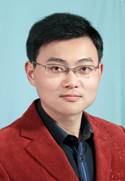
Sun Bo, Doctoral Student in the National Key Research Center for Linguistics and Applied Linguistics, has conducted his research in Forensic Linguistics. He is strongly interested in discourse analysis, courtroom language research and language evidence. To prepare for his Doctorate Dissertation, he now focuses on text identification, including authorship attribution and plagiarism in translation. As for authorship attribution, Howald (2008) divides techniques of authorship attribution into two broad categories–forensic stylistic approach and stylometric approach. The former usually select some prescriptive variables and report a comparatively low accuracy 67-72% (Koppel and Schler 2003). The latter mainly focus on those quantifiable variables and perform significantly better in the accuracy rates: in the high 80% range (e.g. Baayen et al. 2002). In addition to this, as required by Daubert criteria, scientific methods with known or potential error rates are more acceptable in the courtroom of USA. Therefore, stylometric approach is more widely used in authorship attribution. When this approach is adopted, researchers tend to locate a set of characteristics from texts, establish them as variables and conduct statistical analysis. In authorship attribution, researchers making use of forensic stylistic approach mostly attempt to look for characteristics with saliency from the linguistic forms, such as upper and lower case, punctuation, date format, and etc. These characteristics are treated as idiolect and analyzed accordingly. Nevertheless, with the widespread use of computers, some of these characteristics, for example date formula, are automatically generated by computer systems. What is more, as these characteristics are easily noticeable, authors can change them without difficulties so as to disguise their real identity. As a consequence, the result of authorship attribution is not as accurate as expected. On the other hand, although stylometric approach also searches for clues from linguistic forms, researchers primarily select some quantifiable variables from sample texts, such as word length, sentence length, and frequency of function words, employ statistical techniques and infer that the author of these texts has certain writing habits, which are looked upon as idiolect and used for comparison among texts. Since most of these writing habits are scarcely perceptible, they tend to be more reliable and thus the accuracy of authorship attribution is improved. The suggestions for research fellows and postgraduates would be to have a comprehensive knowledge of forensic linguistics and read the latest literatures in fields like authorship attribution, plagiarism detection and forensic speaker identification. Besides, being proficient in statistical techniques is also of great significance.
